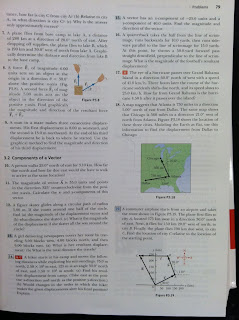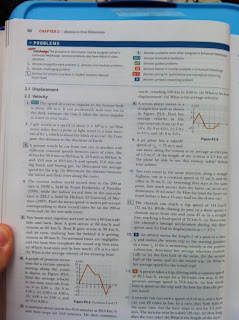Notes from class:
And then there was Einstein…
Albert Einstein 1879-1955
http://www.aip.org/history/einstein/index.html
What’s happening around the turn of the 20th century? Physics was set to explode with 30 brilliant years of excitement and unprecedented activity
X-rays – Roentgen
Radioactivity – Becquerel, Marie & Pierre Curie
Blackbody radiation (and the quantum discontinuity) – Planck
1905/6 – Einstein publishes 6 major papers:
a) “On the electrodynamics of moving bodies”
b) “Does the inertia of a body depend upon its energy content?”
c) “On a heuristic point of view about the creation and conversion of light”
d) “On the theory of the Brownian movement”
e) “On the movement of small particles suspended in stationary liquid demanded by the molecular-kinetic theory of heat”
f) “A new determination of molecular dimensions”
What are these about anyway?
a. Special relativity (SR)
b. E = m c2 (actually, L = m c2)
c. Photoelectric effect, light quanta, fluorescence
d. Same as title
e. Brownian motion agan
f. Avagadro’s number, etc.
Now, these are interesting (and very different fields of study), but is this why we revere Uncle Al? Not necessarily. Others (Poincare, Lorentz) were working on what would become SR. Planck had introduced the quantum discontinuity (E = h f) and quantum mechanics (QM) would have many contributors. The photoelectric effect had also several investigators (Lenard, et.al.).
Mostly, Einstein’s legend grows because of General Relativity (GR), which appears 1912-1915 and later and on which he worked largely alone with pad and pen. He forced us to re-examine how we see ourselves in the universe; indeed, how we think of gravitation. All of this around the time his marriage was falling apart (he married young after fathering 1 illegitimate child) and he began an affair with his cousin (whom he would later marry). Also, between 1902 and 1909, Einstein held a modest post in Bern, Switzerland as a Patent Clerk. By 1914, he would be director of the Kaiser Wilhelm Institute (later Max Planck Institute).
Special Relativity
Spaceship – Inside an inertial reference frame (constant velocity), you can’t tell whether or not you’re moving (“Principle of Relativity”)
Biographical notes
1879 – born in Ulm, Germany
1884 – receives first compass
1895 – attempts to gain entrance to Swiss Polytechnic (and finish high school early), but is rejected
1896 – begins Federal Polytechnic (ETH) in Zurich, Switzerland
1898 – meets Mileva Maric
1900 – graduates from ETH
1901 – Einstein becomes Swiss citizen and moves to Bern; Mileva becomes pregnant
1902 – Lieserl born (put up for adoption); Hermann dies
1903 – Albert and Mileva marry
1904 – Hans Albert born
1905 – Einstein’s “Annus Mirabilus”, his miracle year; Ph.D. (Zurich)
1919 – divorces Mileva (having lived apart for 5 years); marries Elsa; GR verified
1921 – awarded the Nobel Prize in Physics "for his services to Theoretical Physics, and especially for his discovery of the law of the photoelectric effect".
1933 – settles in Princeton, NJ
1936 – Elsa dies
1939 – E. writes FDR
1940 – E. becomes American citizen
1949 – Mileva dies
1955 – E. dies
http://www.aip.org/history/einstein/index.html
http://www.albert-einstein.org/
http://einstein.stanford.edu/
http://en.wikipedia.org/wiki/Einstein
General Relativity
By 1907, E. wanted to advance the SR theory to include non-inertial (accelerated) frames of reference. Around this time, E. has the “happiest thought of my life”. In a uniformly accelerated spaceship, a stationary thing (ball, etc.) would appear to be falling (accelerating) down – it would be indistinguishable from normally accelerated motion. Light, too, follows this idea. Two clocks at different ends of an accelerated spaceship would be out of sync. Gravity is the result of the curvature of space and time?
Why does the Earth follow the Sun? Gravity – the very presence of the Sun causes Earth to veer from its otherwise straight (Newtonian inertial) path. With the Sun, it takes an elliptical path as its natural motion. Getting to this point, and showing that mass alters space and time is the real genius.
There is a breakdown of the observed geometry (Euclidean). E. must use non-Euclidean geometry (Gauss, surfaces, infinitesimal geometry) to consider the behavior of things (rods, etc.) on surfaces. He also considers the shortest distance between 2 points on a sphere (geodesic, great circle). He obtains the mathematical advice of his friend Marcel Grossman and studies (at great length) tensor calculus, differential geometry, Riemann and Minkowski math … it’s all puzzle solving. Soon, the principle of equivalence emerges. Eventually, the gravitational field equations appear (to show how matter “produces” gravity. GR was mostly worked out by 1913




















